Description
ТРИТАЦЕ®
the Trade name
of Tritatse®
the International unlicensed
name Ramipril Lekarstvennaya a form
of the Tablet of 5 mg and 10 mg
Structure
One tablet of 5 mg contains
active agent – ramiprit 5 mg,
excipients: methylhydroxypropyl cellulose, previously gelated corn starch, cellulose microcrystalline, sodium stearit fumarating, iron oxide red E 172.
One tablet of 10 mg contains
active agent – ramiprit 10 mg,
excipients: methylhydroxypropyl cellulose, previously gelated corn starch, cellulose microcrystalline, sodium stearit fumarating.
The description
of the Tablet of 5 mg
Pink oblong tablets with dividing risky, an engraving on the one hand: 5/emblem firms, on the other hand: 5/HMP
of the Tablet of 10 mg
White or almost white oblong tablets from dividing risky. Engraving on the one hand: HMO/HMO
Pharmacotherapeutic group
Inhibitors of the angiotensin-converting enzyme (ACE)
the Code of automatic telephone exchange C09AA05
the Pharmacological
Pharmacokinetics Absorption properties of a ramipril after oral introduction fast and practically does not depend on meal. Elimination half-life of a ramipril makes about 1 h. After absorption ramiprit almost completely it is hydrolyzed to active agent of the ramiprilat, mainly in a liver. After oral administration the maximum plasma concentration of the ramiprilat is reached in 2-4 h. Removal of the ramiprilat is carried out in several phases. In distribution phases on fabrics and removal plasma concentration of the ramiprilat falls with elimination half-life about 3 h. Then a transitional phase with elimination half-life about 15 h and a long final phase with very low plasma concentration of the ramiprilat and elimination half-life of, about, 4-5 days follow. The long final phase is caused by slow destruction of close and saturable connection of the ramiprilat with the turning enzyme. Contrary to long terminal elimination half-life, the saturation stage – with the plasma concentration of the ramiprilat remaining a constant at repeated introduction of a ramipril in a dose ≥ 2.5 mg – was reached approximately after 4 days. At repeated introduction the effective elimination half-life important in terms of dosing made 13-17 h. The volume of distribution of a ramipril – about 90 l, the relative volume of distribution of the ramiprilat – about 500 l. Communication with blood proteins – about 73% for a ramipril and about 56% for the ramiprilat.
At disturbance of renal function (the clearance of creatinine
When using high doses (10 mg) leads decrease in hepatic function to the slowed-down metabolism of a ramipril to the ramiprilat and to the slowed-down removal of the ramiprilat.
In heart failure after 2 weeks treatment by doses of a ramipril of 5 mg noted 1.5-1.8-fold increase in plasma concentration of the ramiprilat and indicators of AUC (the areas under a curve ‘concentration time’).
The kinetics ramiprit and the ramiprilat at patients of advanced age (65-76-summer) was similar to that at young people.
After oral administration marked in stool 39% of radioactivity, in urine – about 60% were defined by radioactive isotope of a ramipril. At disturbance of outflow of bile ramiprit practically in identical proportions is defined in urine and in bile during 24 h after oral administration of 5 mg of a ramipril.
In view of the significant primary metabolism (activation) in a liver after oral administration, with urine only a small amount of not changed ramipril is removed. Besides transformation in ramiprilat, ramiprit turns into inactive diketopiperazine and it glyukuronizirutsya. Ramiprilat is exposed to a glyukuronization and disintegration to diketopiperazine acid too. Except for the ramiprilat, and itself ramiprit all formed metabolites are pharmacological inactive. The bioavailability of a ramipril after oral introduction is 28% for 5 mg of a dose of a ramipril.
A pharmacodynamics
In a liver of esterase will transform ramiprit in ramiprilat, inhibitor of the angiotensin-converting enzyme (ACE). APF is peptidil-dipeptidase which carries out angiotensin transformation І in vasoconstrictive substance, angiotensin ІІ.
Suppression of APF leads to reduced formation of vasoconstrictive angiotensin ІІ in fabrics and blood plasma that in turn leads to decrease in secretion of Aldosteronum and, therefore, increase in potassium concentration in blood serum. The lack of negative feedback between angiotensin ІІ and secretion of renin leads to strengthening of activity of plasma renin.
In view of the fact that APF participates in bradykinin disintegration – vasoconstrictive peptide, suppression of APF causes strengthening of activity of a kallikrein-kinin system (and, therefore, activates the system of prostaglandins).
It is considered that this mechanism can participate in lowering of blood pressure and metabolic activity of APF inhibitors and to be partially involved in development of some undesirable reactions.
In arterial hypertension to Tritatsa causes a lowering of arterial pressure in a standing position and lying without compensatory increase of warm reductions, and considerably reduces peripheric arterial resistance. As a rule, there are no clinically significant changes in a renal blood-groove and in extent of glomerular filtration.
At most of patients the antihypertensive activity was observed, approximately, in 1.5 h after oral administration to Tritatsa, reaching a maximum after 5-9 h. The effect of the greatest lowering of arterial pressure was usually noted after 3-4 weeks. At use of the recommended daily dosage even at long-term treatment the resistance does not develop. Sharp cancellation of a ramipril does not cause fast, excessive increase in pressure of blood (effect of retroaction).
With heart failure to Tritatsa causes decrease in system resistance and increase in venous volume in patients. It leads to decrease in warm preloading and afterload of heart. Besides, increase in warm emission, the index of filling of pulse and shipping of physical activity is observed during treatment ramiprily.
At patients with heart failure of light and average severity after an acute myocardial infarction (2-9-day), ramiprit reduces the general mortality by 27%, in comparison with placebo.
At patients with the increased cardiovascular risk as a result of vascular disorders (for example, at the demonstrating disease of coronary arteries of heart, occlusal diseases of peripheral arteries or presence of a stroke in the anamnesis) or diabetes, at least, with 1 accessory factor of risk (microalbuminuria, hypertensia, increase in the general cholesterol of blood, decrease in the VPL level, smoking), ramiprit considerably reduces the frequency of myocardial infarctions, strokes and deaths.
Indications
– essential arterial hypertension
– heart failure of light and average severity (II and III article on NYHA) after sharp (from 2 to 9 days) a myocardial infarction
– not diabetic glomerular nephropathy (clearance of creatinine of 1 g/day), especially, if it is followed by arterial hypertension
– for reduction of risk of a myocardial infarction, a brain stroke or a cardiovascular disease mortality at patients with the increased risk of cardiovascular diseases, such as the demonstrating disease of coronary arteries of heart, diabetes with not less, than one accessory factor of risk, occlusal diseases of peripheral arteries and existence in the anamnesis of a brain stroke.
A route of administration and doses
Perhaps excessive lowering of arterial pressure in an initiation of treatment drug, especially, at patients with the low content of salts and liquids in an organism (for example, vomiting, a diarrhea, treatment by diuretics), heart failure (especially, after an acute myocardial infarction) or heavy hypertensia.
The shortage of salts and liquid in an organism is subject to preliminary correcting prior to treatment by the tablets Tritatse, diuretics should be limited or cancelled previously, not later than 2-3 days (in case of heart failure it is necessary to reckon with overload probability as volume). Treatment of such patients should be begun with the smallest single dose of 1.25 mg of a ramipril accepted in the morning.
After the first dose and also at increase in a dose ramiprit and (or) loopback diuretics, patients are subject to medical observation for not less than 8 hours for prevention of development of uncontrollable hypotensive reaction.
Elderly patients (65 years are more senior) can have more expressed reaction to APF inhibitor, than at patients of younger age. In this regard elderly sick and, especially, sick with risk of strong falling of arterial blood pressure (for example, in a stenosis of coronary vessels or brain vessels) purpose of the minimum initial dose can be required (1.25 mg of a ramipril a day).
In malignant hypertensia and in case of heart failure, in particular, after an acute myocardial infarction, treatment by the tablets Tritatse should be begun in stationary conditions.
If do not appoint differently, then in case of patients with normal renal function use the following recommendations about dosing.
Essential arterial hypertension
Usually, an initial dose – on 2.5 mg to Tritatsa in the mornings, this dose is and supporting. If at such dosage within 3 weeks and it is not possible to normalize pressure any more, then it is possible to increase a dose to 5 mg a day. The maximum daily dose – 10 mg.
If the hypotensive effect of a daily dose of 5 mg to Tritatsa is insufficient, it is necessary to weigh a possibility of additional use, for example, of diuretics or calcic antagonists. Thanks to it it is possible to increase hypotensive effect of drug.
Heart failure of light and average severity (NYHA II and III) after an acute (2 – 9-day) myocardial infarction.
At this indication the purpose of a dose of the tablets Tritatse can be carried out only in stationary conditions at patients with a stable hemodynamics.
Patients with the accompanying antihypertensive therapy are subjected to very careful monitoring in order to avoid sharp falling of arterial blood pressure.
Usually, an initial dose – 2.5 mg to Tritatsa, in the morning and in the evening (a daily dose – 5 mg). At intolerance the patient of this dose (for example, an excessive lowering of arterial pressure), it is necessary to lower a dose to 1.25 mg accepted in the morning and in the evening (a daily dose – 2.5 mg).
The dose can be increased depending on a condition of the patient. It is possible to double it each 1-2 days to the maximum daily dose: on 5 mg to Tritatsa in the morning and in the evening (i.e. a daily dose – 10 mg).
Not diabetic glomerular nephropathy
the Recommended initial dose: 1.25 mg to Tritatsa once a day.
The dose should be increased depending on shipping. It is recommended to double a dose with observance of 2-3 weeks intervals. A usual maintenance dose – 5 mg of a ramipril a day. The therapeutic experience accumulated so far on use of higher doses still is insufficient. In case of patients with clearance of creatinine
For reduction of risk of development of a myocardial infarction, a stroke or cardiovascular death at patients with the increased cardiovascular risk
the Recommended initial dose – on 2.5 mg ramiprit once a day. Depending on shipping, the dose is gradually increased. In a week it is recommended to double a dose, and in 3 weeks to bring it to the usual maintenance dose equal of 10 mg.
Doses for patients with disturbance of renal function (clearance of creatinine
the Initial dose – 1.25 mg to Tritatsa in the morning. The maintenance dose makes, usually, 2.5 mg a day. The maximum daily dose should not exceed 5 mg.
The pill Tritatse is taken inside with plentiful amount of liquid irrespective of meal.
After an acute myocardial infarction the patients with heart failure have to start reception of the daily dose specified for them, having divided it into 2 receptions (in the morning and in the evening). In other cases all daily dose can be accepted at one time, in the morning.
At development of heart failure after an acute myocardial infarction, Tritatsa should begin treatment not earlier than in 2 days after a heart attack, but no later than the 10th day after a heart attack.
Not less than 15 months are recommended to take the drug.
Side effect
is frequent (≥ 1% – <>
– dry, unproductive cough
infrequently (≥ 0.1% – <>
– tachycardia
– rashes, urticaria and an itching, an angioedema with involvement of lips, persons and (or) extremities are observed infrequently, they demand cancellation of the tablets Tritatse. slight hypostasis (not angioedema) of anklebones
– conjunctivitis
– disturbance of renal function or its deterioration
– increase in concentration of urea and creatinine at patients with a renal failure is possible
– increase in bilirubin and liver enzymes
is rare (≥ 0.01% – <>
– a headache, fatigue, balance disturbance, a somnolence, drowsiness, suppressed mood, sleep disorders, impotence, loss of a libido, confusion of consciousness, feeling of the increased uneasiness, irritability, a tremor, a hearing disorder (for example, a ring in ears), indistinct sight, disturbances of taste and sense of smell, temporary loss of flavoring feelings
– in an initiation of treatment and also patients with deficit have salts and liquids (for example, after treatment by diuretics), with heart failure (especially, after an acute myocardial infarction), heavy hypertensia and also at increase in a dose to Tritatsa and (or) diuretics, perhaps excessive lowering of arterial pressure (hypotension, orthostatic reaction) with dizziness symptoms, dizziness (sometimes with loss of ability to concentration of attention), the strengthened sweating, feeling of weakness, a disorder of vision
– a loss of consciousness (syncope)
– the strengthened heartbeat and stenocardia, arrhythmia of heart or its strengthening
– disturbances of blood circulation as a result of a vascular stenosis
– a bronchospasm, diarrhea, bronchitis, sinusitis, rhinitis
– the angioedema provoked by APF inhibitors can progress and extend to a throat, a throat and (or) language. Angioedema against the background of therapy by APF inhibitors is registered at black patients more often.
– nausea, loss of appetite, a stomach ache, in an upper part of a stomach (with increase in enzymes of a pancreas), digestion disturbances, vomiting, a diarrhea or a constipation
– stomatitis, a glossitis, disturbances from digestive tract, dryness in a mouth and feeling of thirst
– against the background of treatment by APF inhibitors are registered rare messages about a syndrome, beginning with cholestatic jaundice and passing into liver necrosis (sometimes from the death)
– rushes of blood to the head
– is rare, especially, in a renal failure, diseases of connective tissue or at at the same time carried out treatment by Allopyrinolum, procaineamide and some other medicines suppressing the immune system anemia, thrombocytopenia, an eosinophilia
– hemolysis (hemolytic anemia), including in connection with deficit glyukozo-6-fosfatdegidrogenazy
– increase in potassium (at patients with diabetes) and decrease in sodium in blood serum
– increase in level of pancreatic enzymes is possible.
very seldom (
– paresthesias
– a myocardial infarction, the tranzitorny ischemic attack, an ischemic stroke
– an intestinal angioedema
– pancreatitis, impassability of intestines (including full)
– disturbances of hepatic function (including a liver failure) and hepatitis. In case of jaundice or the significant increase in level of liver enzymes it is necessary to stop treatment and to provide medical observation of the patient
– cases of serious skin reactions, such as mnogoformny erythema, syndrome Stephens-Johnson and a toxic epidermal necrolysis
– cases of a makulo-papular dieback and an enantema, a bladderwort, deterioration in a course of psoriasis, psoriazoformny, pemfigoidny and lichenoid damages of skin and mucous membranes, photosensitivity, an alopecia, onikholizis, a vasculitis and deterioration in a course or development of a syndrome of Reynaud. Some skin reactions can be followed by fever, myalgia, an arthralgia (or) arthritis, a vasculitis, an eosinophilia and (or) increase in a caption of antinuclear antibodies
– a proteinuria, sometimes with decrease in renal function, a renal failure
– muscular spasms, myalgia, an arthralgia and fever
– decrease in concentration of hemoglobin, a hematocrit, number of leukocytes and thrombocytes
– an agranulocytosis or a pancytopenia (for example, as a result of myelosuppression), the raised ANA caption
– strengthening of a proteinuria.
Contraindications
– hypersensitivity to active ingredient to a ramipril, other APF inhibitors and other components of the tablets Tritatse
– an angioedema in the anamnesis (inborn or idiopathic, for example, as a result of earlier carried out treatment by APF inhibitor)
– a renal artery stenosis (bilateral, in case of one kidney – unilateral)
– a state after renal transplantation
– hemodynamically significant stenosis of an aorta or the mitral valve or a hypertrophic subaortic stenosis
– primary aldosteronism
– pregnancy (is subject to identification before treatment, taking measures to contraception is necessary), a lactation.
In the heart failure of light and average severity which followed after an acute myocardial infarction there are additional contraindications:
– persistent hypotension (systolic pressure
– orthostatic dysregulation
– heavy heart failure (NYHA IV)
– unstable stenocardia
– zhizneugrozhayushchy ventricular arrhythmia
– a pulmonary heart.
In view of lack of therapeutic experience, the tablets Tritatse cannot be applied also in the following cases:
– a nephropathy to which treatment steroids are applied, non-steroidal anti-inflammatory drugs, immunomodulators and (or) cytotoxic substances
– dialysis
– primary disease of a liver or decrease in hepatic function
– uncured dekompensirovanny heart failure
– children’s age.
Medicinal interactions
Are possible the following interactions during at the same time carried out treatment by the tablets Tritatse or other APF inhibitors and following medicines:
– potassium salts, kaliysberegayushchy diuretics (for example, amiloride, Triamterenum, Spironolactonum): more significant increase in potassium concentration in serum (during simultaneous treatment by these drugs strict monitoring of potassium concentration in serum)
– antihypertensive drugs (especially, diuretics is necessary) and other substances capable to reduce arterial blood pressure (for example, nitrates, tricyclic antidepressants): strengthening of hypotensive effect of the tablets Tritatse (during simultaneous treatment with diuretics the regular monitoring of potassium concentration in serum is recommended)
– hypnotic drugs, drugs, anesthetics: more significant lowering of blood pressure (in case of need Tritatsa should inform the anesthesiologist on treatment)
– vazopressivny sympathomimetics (for example, adrenaline): easing of hypotensive effect to Tritatsa (careful control of arterial blood pressure is recommended)
– Allopyrinolum, procaineamide, the cytostatics, immunosuppressants, system corticosteroids and other medicines influencing a blood picture is possible: probability of hematologic reactions, in particular, decrease in number of leukocytes of blood, a leukopenia
– lithium increases: concentration of lithium increases in serum therefore cardiotoxicity and neurotoxicity of lithium increases (regular monitoring of level of lithium in serum)
– oral anti-diabetic means (for example, sulphonylurea drugs, biguanides is required) and insulin: in connection with possible decrease in insulin resistance, the tablet Tritatse enhance hypoglycemic effect, up to a hypoglycemia (it is recommended to carry out especially careful monitoring of level of sugar to blood in an initiation of treatment)
– non-steroidal anti-inflammatory drugs, anesthetics (for example, indometacin, acetylsalicylic acid): easing of hypotensive effect is possible, increase in risk of a renal failure and increase in potassium concentration in serum
– heparin is possible: increase in potassium concentration in serum
– chloride sodium is possible: easing of hypotensive effect and less effective treatment of symptoms of heart failure
– alcohol: strengthening of hypotensive effect and effect of alcohol.
Special instructions
If during treatment there is an angioedema, reception of the tablets Tritatse should be stopped at once. Angioedema provoked by APF inhibitors involves a throat, a throat and (or) language. Also the angioedema of lips, persons, extremities or intestines is possible.
At suspicion on serious skin reactions the patient should see immediately the attending physician, in case of need treatment by the tablets Tritatse should be stopped.
Against the background of treatment by APF inhibitors of hypersensitivity reaction on poison of insects develop quicker and proceed heavier.
Reception of the tablets Tritatse is possible only when the advantage of treatment obviously exceeds risk, at the same time in the following of a case it is required to carry out regular monitoring of standard clinical and laboratory indicators:
– disturbance of electrolytic balance in clinically significant degree
– disturbances of an immune response or a disease of connective tissue (for example, a lupus erythematosus, a scleroderma)
– the accompanying system therapy by the medicines suppressing the immune response (for example, corticosteroids, cytostatics, antimetabolites), therapy by Allopyrinolum, procaineamide and lithium.
At patients with superactivity system renin-angiotenzinovoy perhaps sharp, significant falling of blood pressure with deterioration in renal function as a result of suppression of APF. In such cases if the tablets Tritatse are used for the first time or in the increased dose, it is necessary to carry out strict monitoring of pressure of blood until the possibility of the subsequent acute falling of blood pressure is not excluded.
The superactivity renin-angiotenzinovoy of a system is possible, for example, at patients:
– previously treated diuretics,
– with deficiency of salt and (or) liquid
– with heavy arterial hypertension
– with heart failure, in particular, after an acute myocardial infarction
– with difficulty of inflow or outflow of a left ventricle (for example, an aorta stenosis, a mitral stenosis, a hypertrophic cardiomyopathy)
– with a renal artery stenosis with significant disturbance of a hemodynamics (can be required to cancel therapy by diuretics).
The following patients demand especially careful supervision in an initiation of treatment:
– elderly patients (65 years),
– patients with the increased risk of an excessive lowering of arterial pressure (for example, patients with a stenosis of the coronary vessels or vessels supplying a brain are more senior).
Renal function is subject to control before purpose of the tablets Tritatse. Control of function of kidneys is recommended, in particular, and in the first weeks of treatment, especially at patients
– with heart failure
– with a unilateral renal artery stenosis (in such cases even small increase in level of creatinine in blood serum indicates insufficiency of the affected kidney)
– with a renal failure (frequent control of level of potassium in blood is necessary).
Short-term control of electrolytes and concentration of creatinine in blood, blood pictures (especially white cells) is recommended, in particular, in an initiation of treatment and patients have risk groups (a renal failure, diseases of connective tissue) and at the patients taking the drugs influencing a blood picture (for example, immunosuppressants, cytostatics, Allopyrinolum or procaineamide).
At development during treatment by the tablets Tritatse of such symptoms as fever, a hyperadenosis and (or) a tonsillitis, it is necessary to carry out check analysis of number of leukocytes immediately.
It is necessary to avoid simultaneous use of the tablets Tritatse (or other APF inhibitors) and courses of extracorporal therapy during which the contact of blood with negatively charged surfaces, because of danger of development of heavy anaphylactic reactions takes place, up to zhizneugrozhayushchy shock.
Dialysis or haemo filtration by means of polymaterials (acrylonitrile, sodium-2-methylallylsulphonate) of high-flowing membranes (for example, AN 69) and aferez lipoproteins of the low density (LDL) by means of a dextran of sulfate should not be applied during treatment by the tablets Tritatse.
In case dialysis, haemo filtration or aferez are extremely necessary for NPLP, it is necessary to replace previously to Tritatsa with drug, other, suitable for this indication, – which should not be APF inhibitor – or it is necessary to use other dialyzing membrane.
The treatment directed to desensitization to poison of insects (a bee, a wasp), and a concomitant use of one of APF inhibitors can initiate anaphylactoid reactions (for example, a lowering of arterial pressure, short wind, vomiting, allergic skin reactions) which can sometimes accept zhizneugrozhayushchy character. Hypersensitivity reactions can arise also after stings of insects (for example, bees, wasps). If performing desensitization to poison of insects is necessary, APF inhibitor has to be temporarily replaced with the corresponding medicine of other class.
Pregnancy and a lactation
the clinical experience which is Available so far is not sufficient for definition of degree of safety of the tablets Tritatse during pregnancy. In recent years cases of the fetal syndrome in connection with intake of APF inhibitors characterized by a heavy hypoplasia of bones of a skull, a delay of pre-natal development oligogidramniony and a neonatal anury and capable to cause death of the newborn were described. Believe that the syndrome is caused by the hypotensive effect which had on a fruit in 2 and 3 trimesters of pregnancy. It is not known whether use of the tablets Tritatse in the first trimester does any harm to a fruit.
Before appointing the tablets Tritatse it is necessary to exclude existence of pregnancy at women of childbearing age. During treatment by the tablets Tritatse women need to take the appropriate measures for ensuring contraception. If, despite this, during treatment by the tablets Tritatse pregnancy is found, after medical consultation it is necessary to begin as soon as possible other treatment at which the child is exposed to the smallest risk.
As it is unknown whether gets ramiprit in breast milk of the person and whether causes undesirable effects in babies, use of the tablets Tritatse during feeding by a breast contraindicated. If in the period of a lactation the treatment is necessary, the child should be weaned.
Influence on ability to driving and the moving equipment
during treatment it is necessary to abstain from occupations potentially dangerous types of activity demanding the increased concentration of attention and speed of psychomotor reactions since dizziness, especially in an initiation of treatment is possible, when changing a dose, and at the patients accepting diuretic means.
Overdose
Symptoms: heavy hypotension, bradycardia, vascular insufficiency, disturbance of electrolytic balance, renal failure.
Treatment: the general and symptomatic. Besides the general measures directed to removal of a ramipril from an organism (for example, gastric lavage, prescribing of adsorbents and sodium sulfate the first 30 minutes after hit of the tablets Tritatse inside), in intensive care unit it is necessary to carry out correction and monitoring of the vital indicators. Ramipril is almost not exposed to dialysis. In case of hypotension first of all it is necessary to fill amount of chloride sodium and the circulating blood volume. In case of inefficiency of these measures it is necessary to enter catecholamines intravenously. Angiotensin use ІІ can be required. In case of refractory bradycardia it is necessary to apply an artificial pacemaker.
Concentration of electrolytes and creatinine in blood are subject to continuous monitoring.
Emergency therapy of an angioedema:
In case of the zhizneugrozhayushchy angioedema extending to language, a glottis and (or) a throat the following measures of the emergency therapy – immediate hypodermic introduction of 0.3 – 0.5 mg of adrenaline or slow intravenous administration of 0.1 mg of adrenaline (taking into account instructions on dilution) with monitoring of the ECG and pressure of blood and the subsequent use of system glucocorticoids are recommended. Besides, intravenous administration of antihistamines (antagonists of H1 and H2 of receptors) is recommended. Except adrenaline the C1 inactivator can be required if there is an insufficiency of the C1 inactivator. Patients are placed in a hospital for observation not less, than for 12-24 hours. The patient can be discharged from hospital only after total disappearance of symptoms.
Forms of release and packing
of the Tablet on 5 mg and 10 mg in blisters: on 14 tablets in the blister consisting of PVC / aluminum foil. 2 blisters together with the instruction for use in the Russian and state languages are placed in a cardboard pack.
To Store storage conditions at a temperature not higher than + 250C.
To store out of children’s reach!
A period of storage
3 years
After an expiration date it is impossible to use drug.
Prescription status
According to the prescription
the Producer Sanofi-Aventis S. of the item. And., Italy for Sanofi-Aventis Doychland GmbH, Germany
of Sanofi-Aventis S.p.A., Italy for Sanofi-Aventis Deutschland GmbH, Germany
To develop
Additional information
| Ingredient |
|---|






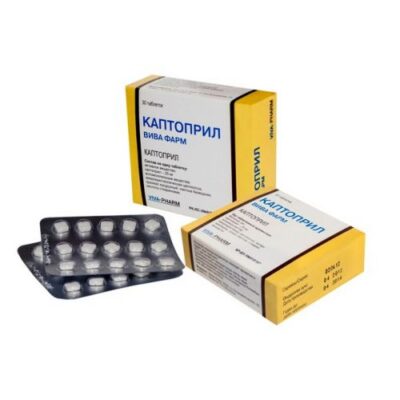
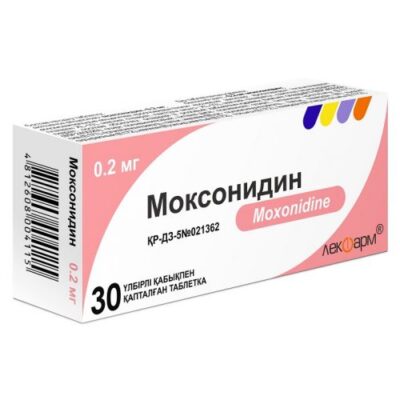
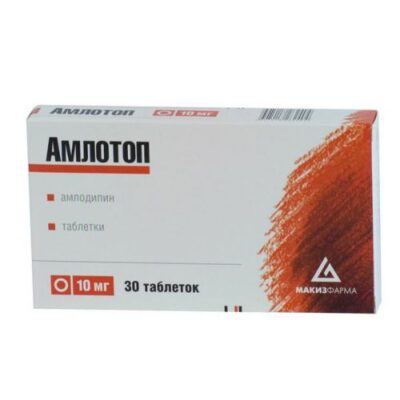
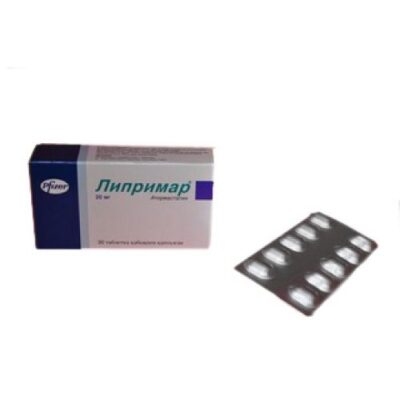
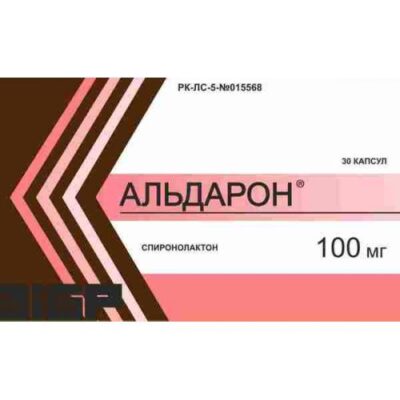
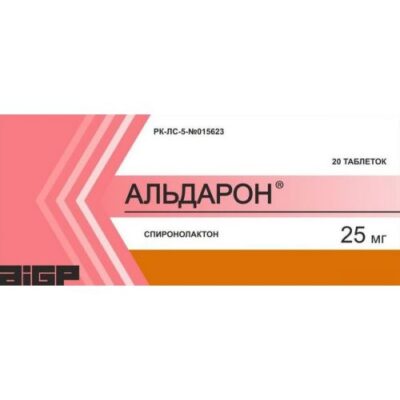
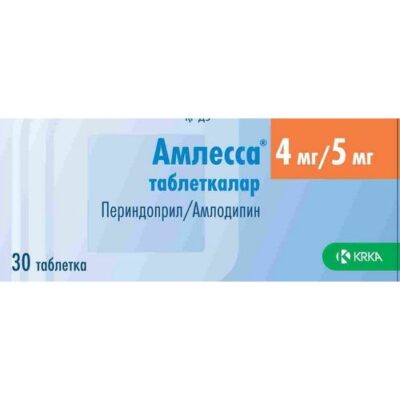
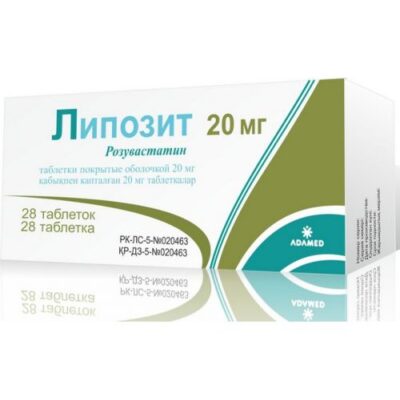
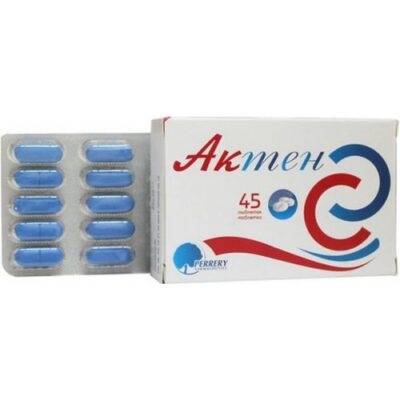
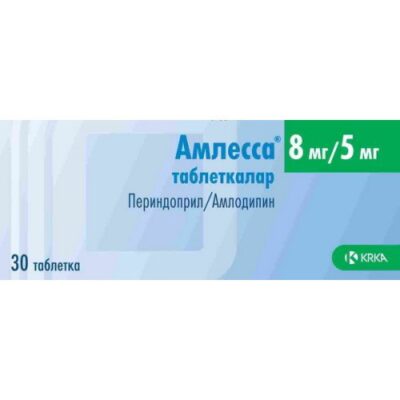






Reviews
There are no reviews yet.